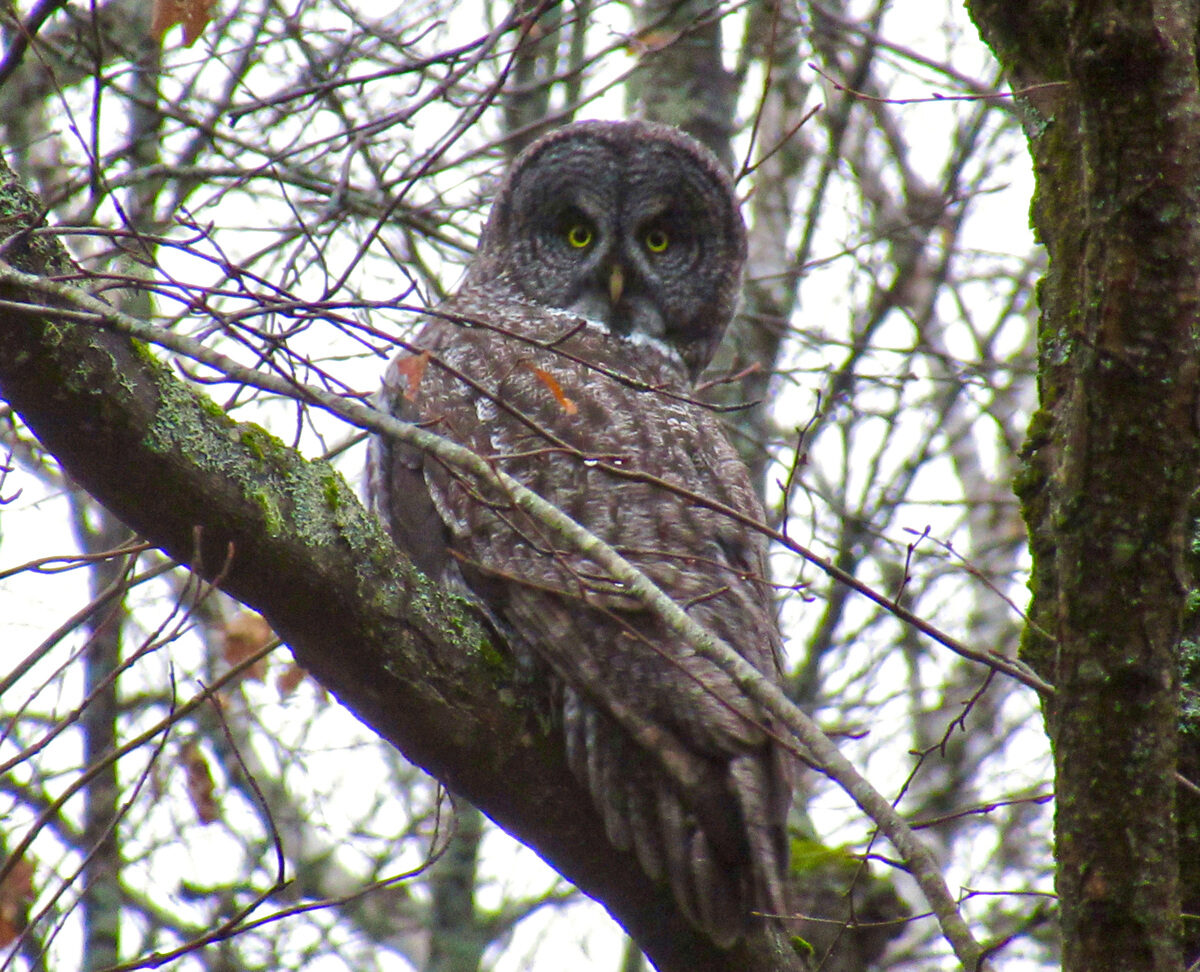
© Colin JandreauThis great gray owl was spotted in October in Aroostook County.
It appears likely that Maine will enjoy another finch-filled winter. The Finch Research Network, a group of inspired biologists based mostly in Ontario, has noted a shortage of berries and cones across the eastern provinces.
The network's 2022-23 finch forecast predicts that fruit-eaters, like pine grosbeaks and Bohemian waxwings, will drop south in search of berries this winter. White-winged crossbills will likely come down in search of a better crop of spruce cones, though some may head farther west where the crop will be more robust this winter.
Last year's white-winged crossbill movement was unusual in Maine. The finches absolutely flooded the North Maine Woods, but few ventured south of Millinocket. Having devoured so much of the cone crop in northern Maine last winter, we'll see if they wander farther down this year. Meanwhile, red crossbills did irrupt farther south last winter, and many of them stayed on to nest this summer.
Purple finches have been leaving Canada for weeks. Canada is experiencing spruce budworm outbreaks, and the purple finches have been feasting on them all summer, leading to a bumper crop of baby finches that must now travel south in search of winter food.
Evening grosbeaks have been feasting on the same budworms, and there has been a notable grosbeak exodus from Canada this autumn. Sizeable flocks have already been reported in Maine and the wave has washed down at least as far as Pennsylvania.
Last winter was a big year for common redpolls in Maine. With food shortages continuing up north, this appears to be another year they will elect to fly south. Some pine siskins will likely join them, though probably not in the same numbers.
Redpolls relish the catkins of birch and aspen, as well as the seeds along grassy roadsides. Siskins prefer the small seeds atop many conifers and that crop is average in Canada this year.
I'm looking forward to another good finch incursion this winter. The winter of 2020-21 was the most boring I can remember — virtually finchless. Blah.
All this finch stuff pales in comparison to what could happen with owls.
I've heard two astounding reports of rare owls already in Maine. A great gray owl was photographed just this side of the Canadian border in Aroostook County. Two days later, a northern hawk-owl was photographed near Eagle Lake.Both owls are rare visitors to Maine. I'd guesstimate that one shows up in Maine about every four or five years, but rarely this early.
Great gray owls and northern hawk-owls tend to appear later in winter, when adverse weather and a dwindling food supply drive them south. Rare owls irrupting in October may be an omen of more to come.Likewise, we're about due for an influx of snowy owls. A few get into Maine every winter. There was a big invasion nine years ago, which continued as an echo for a few more years.
The movement of these owls coincides with boom-bust fluctuations in the lemming population, the snowy's main food. More lemmings mean more owl babies. Some owlets are forced south in winter when the lemming food supply declines.
All three owls can and do hunt in daylight. They nest in a region where it's daylight almost round the clock in summer, so night hunting is a luxury for them. You could see one roosting at noon, although they may not be very active in midday since that might draw harassment from angry crows.
I'm pretty sure you'd recognize a snowy owl if you saw one. They're big and white. Adult males are virtually all white. Females and youngsters have more black barring in the plumage.
You might recognize a northern hawk-owl. Its face is owl-like, but its body and posture are hawk-like. It would certainly look unusual.
Great gray owls are trickier. Barred owls are sometimes misidentified as great grays by overly enthusiastic birders, although great gray owls are much bigger — even larger than great horned owls. However, great horned owls are more powerful, have larger talons and would win any fight.
Pro tip: great gray owls have an obvious white "bowtie" under the chin, which the barred owl lacks. They also have yellow eyes, whereas barred owl eyes are black.
Finches and owls! Bring on winter.
Comment: Britain set for a 'Waxwing Winter' with huge numbers of berry-loving birds heading our way from Scandinavia